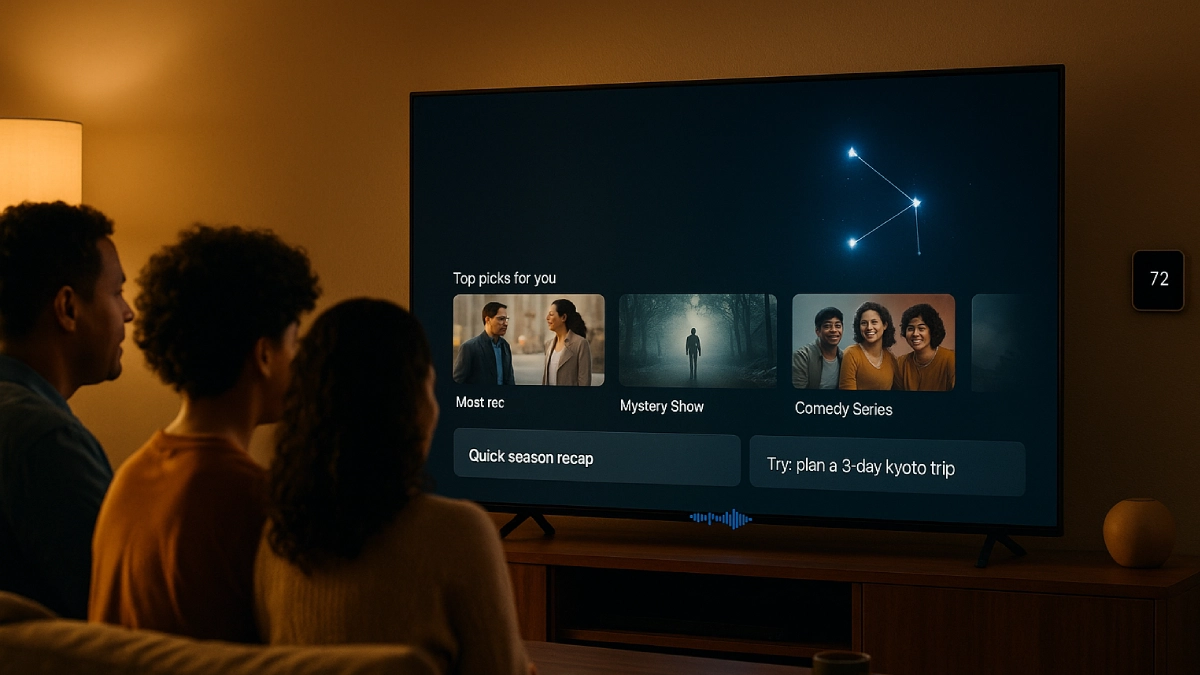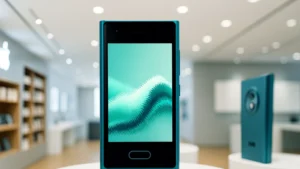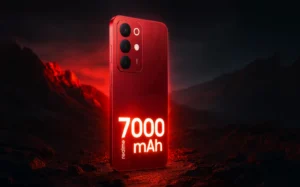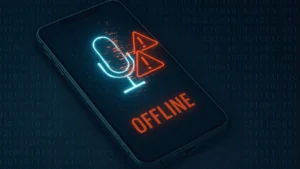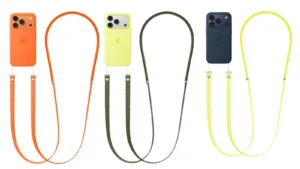The big screen is no longer a passive panel—it’s a conversational surface that stitches together content, search, family tasks, and learning in real time. With Gemini arriving on Google TV, households can talk to the television to get summaries, settle “what to watch” debates, plan trips, help with homework, and continue to use classic Assistant-style commands, all through a free‑flowing AI that sits across streaming and YouTube discovery layers.
What just launched
Gemini is now embedded into Google TV, debuting first on TCL’s QM9K series with expansion planned for select streamers and 2025 models from major partners later this year. The experience is invoked with “Hey Google” or the mic button, supports follow‑ups, and can handle both entertainment and general queries while preserving prior Assistant-style commands for continuity.
From voice commands to conversations
Traditional TV voice assistants were command interpreters; Gemini shifts to intent modeling and multi‑turn reasoning on the television canvas. That enables tasks like vague‑description search (“the sci‑fi with the desert and giant worms”), season recaps before a finale, and reviews to decide if something’s worth watching—all without picking up a phone. Because it’s a general assistant, the living room screen also becomes a planning and learning surface for families beyond entertainment.
The ecosystem flywheel
- Content discovery: Conversational queries expand the funnel from title‑based to intent‑based discovery, tapping reviews, vibes, and memory gaps to convert indecision into watch starts.
- YouTube gravity: Non‑entertainment prompts (learn guitar, cook a recipe, fix a bike) naturally route into video guidance on the biggest screen, deepening time‑on‑platform.
- Cross‑device continuity: Presence across phones and TV compresses the distance between “look it up” and “watch it,” strengthening a multimodal assistant fabric.
Hardware rollout and partners
Availability starts on TCL’s QM9K line, with a planned rollout to Google TV Streamer, Walmart’s onn. 4K Pro, and 2025 Hisense and TCL models later in the year, covering premium and value tiers. The broader goal targets hundreds of millions of active Google TV and Android TV OS devices once the rollout completes.
Assistant continuity and upgrade path
Everything that worked with Assistant still works, with Gemini layered on for deeper, multi‑turn interactions. Practically, that means familiar hands‑free controls and device actions persist while discovery and general knowledge expand into conversational flows, reducing friction for households with established routines.
New living room behaviors
- Settling watch debates: Ask for overlaps between different tastes, then drill into reviews or quick recaps before committing—no second‑screen rabbit hole.
- Catch‑up mode: Get a season summary or key plot beats to rejoin a franchise after time away, then jump straight in.
- Learning sprints: Use the big screen for homework help, project brainstorming, or skill tutorials, with video hand‑offs for “show me how.”
Second‑order effects for streamers and advertisers
Intent‑driven queries will change how platforms merchandise catalogs, elevating recap metadata, structured reviews, and mood‑based curation to first‑class inputs for AI prompts. As more planning and learning queries land on TVs, instructional content could see increased living‑room watch time, shifting ad formats and measurement toward lean‑back utility sessions rather than pure entertainment.
Privacy, presence, and home context
Expect presence‑sensing activation and conversational queries tied to on‑screen context, tightening loops between what’s visible and what’s asked without interrupting viewing. Early availability will be limited by locale and language, with account linkage to the home ecosystem required for the best experience.
Getting started and practical tips
- Invocation: Use “Hey Google” or press the mic button to start a conversation with Gemini on compatible Google TV hardware.
- Use cases to try: “Recap season two of [show],” “Find a cozy mystery under two hours,” “Plan a 3‑day Kyoto itinerary,” “Teach basic guitar chords and queue practice videos.”
- Early adopters: The path of least resistance is TCL’s QM9K series at launch, with broader device coverage promised later in the year.
Competitive posture
TVs have supported voice assistants for years, but a general‑purpose reasoning model plus deep video libraries creates a differentiated, all‑in‑one living room agent. The bet is that natural conversation, tight content context, and a cross‑device assistant fabric will unlock stickier nightly sessions and new surfaces for household problem‑solving.
What to watch next
Expect feature additions over time and deeper ties into household profiles, smart home context, and personalized discovery for multi‑viewer scenarios. As coverage expands beyond the initial models, developer and partner ecosystems will likely tune metadata and UX to feed conversational intents more directly.
Last Updated on October 18, 2025 by Lucy
